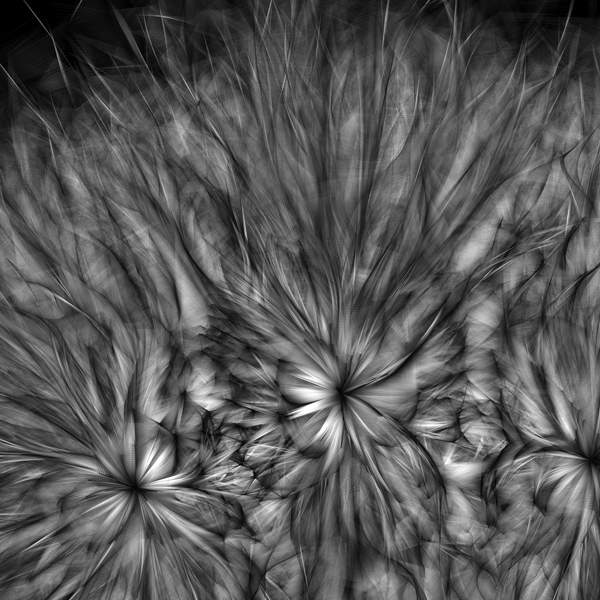Can algorithms be artists?

The digital medium has interfered radically with the realm of art and aesthetics in the past decades. In the last few years, Los Angeles based software artist Casey Reas has made quite a name for himself with elaborate works of art that are constructed out of nothing but a few strings of code and simple algorithms. Reas was recently interviewed by Wired Magazine, where he explained how he simply gives a few specific instructions to a pre-calibrated software platform, and then, along with the viewer, watches the magic happen. For his “Process” series (pictured, also see link below), he assigned a few basic behavioral rules (move in straight line, change direction while touching another element, etc.) to a few simple shapes such as squares or triangles, and then booted the sequence, which, in principle, is infinite and continually emergent.
These and other works of his explore the tricky modern concepts of artificiality, intention and originality by outsourcing the artistic activity to a software agent, while the artist himself becomes a type of curator of the sequence. This category of art has been established for some time, with well-known digital art museums and galleries in New York and Berlin, such as Bitforms or DAM Gallery, but it remains relatively unknown to the broader public. Perhaps this is because computing today has become so thoroughly entrenched in immediacy that its potential as an active, even creative medium has been subdued by the accelerating demands of modern media technology. Digital art, like Reas’, is necessary because it highlights and defamiliarizes the all-encompassing but invisible realm of computing, in a way that is profoundly related to aesthetics and which highlights the palpitating aesthesis of the non-human realm.
Links:
